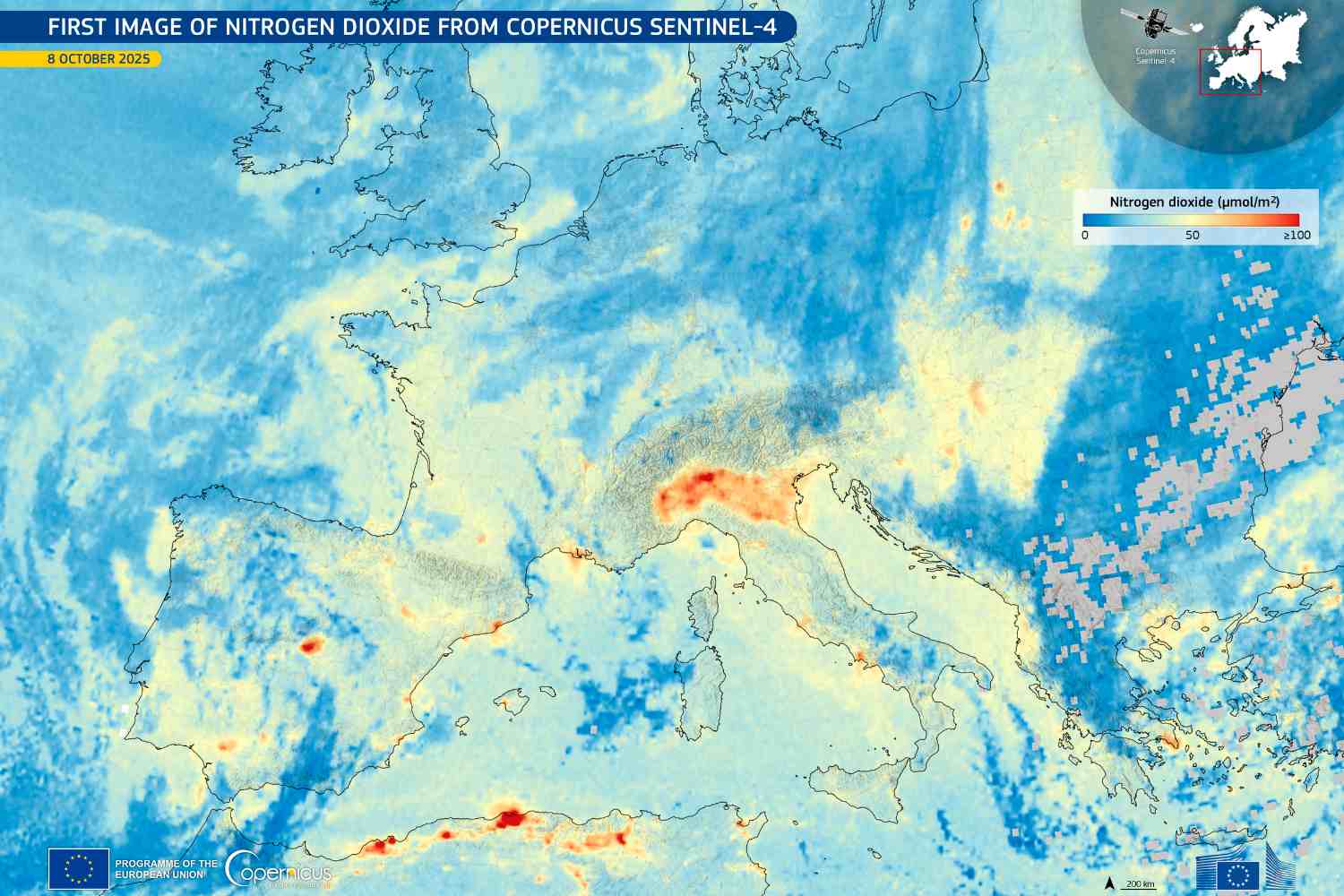Sentinel-4 satellite delivers first images showing nitrogen dioxide hotspots across Mediterranean coast and Po Valley, marking milestone in air quality monitoring.

The new Copernicus Sentinel-4 satellite mission has achieved its objective, sending its first set of visual data to Earth. These initial high-resolution images, acquired from geostationary orbit, highlight atmospheric concentrations of pollutants such as sulfur dioxide, ozone, and most notably, nitrogen dioxide. Based on initial measurements from October 8, 2025, the maps show clear “hotspots” of tropospheric nitrogen dioxide along the Mediterranean coast and, particularly strikingly, over the Po Valley, in Italy.
Sentinel-4, the geostationary eye for air quality
The delivery of these first images from Sentinel-4 is a milestone achievement. This new instrument, positioned in geostationary orbit at 22,369 miles (36,000 kilometers) from Earth last July 1st, is destined to become one of the pillars of European capacity for near-real-time air quality monitoring. The initial images clearly reveal atmospheric concentrations of several critical pollutants, providing essential information for environmental and health management.
Nitrogen dioxide: sources and risks
Particular attention focuses on nitrogen dioxide (NO2), tracked with precision—a pollutant of primary atmospheric importance. It’s released in large quantities following the combustion of fossil fuels, a process that occurs daily in various sources, such as vehicle engines, power plants, and heating systems. Its concentrations, consistent with the nature of emission sources, can vary extremely rapidly.
Nitrogen dioxide isn’t only toxic in itself, but is also a key precursor for the formation of secondary pollutants. It contributes, in fact, to the genesis of ground-level ozone and particulate matter. Both of these secondary formations are known to have serious repercussions on human health and the environment, aggravating respiratory problems and the overall ecological impact.
Despite the current dataset still being preliminary, these first acquisitions from Sentinel-4 represent a true milestone for Europe. The ability to continuously monitor atmospheric composition from geostationary orbit will provide essential tools for better understanding pollution evolution and implementing more effective mitigation strategies.
Source: Copernicus
